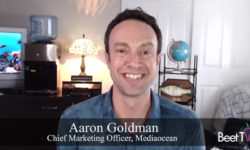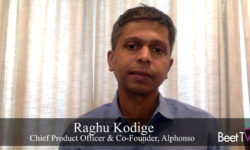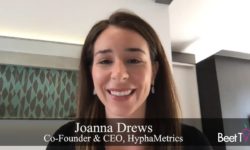LONDON — Too many ad campaigns are ineffective and wasteful because they are not using available audience signals to better target.
That’s according to one ad exec who says he knows how to close the loop.
“We were talking with some large agency groups over the last couple of years, and when you measure TV effectiveness, one large agency group, we’re seeing as many as 20% of campaigns that they ran had no discernible uplift according to the surveys that they ran against customer groups,” says Stephen Upstone, CEO and founder of LoopMe, in this video interview with Beet.TV.
“Yet at the same time, you could identify groups of people within the broader demographics that were positively impacted by the campaign.”
The CTV loop
That is why LoopMe, an eight-year-old company with offices around the world, just just unveiled a product upgrade aimed at using real, observed data points about consumer outcomes that flow from ad exposure to course-correct connected TV ad campaigns mid-flight.
LoopMe’s PurchaseLoop aims to go beyond “proxy” ad metrics like views and click-throughs by using a massive audience data pool and AI algorithms to identify real uplift outcomes like awareness, consideration, favorability, intent, foot traffic and offline sales.
“We’ve collected data from two billion consumers around the world – that’s 250 million people in the US – and we built a household graph as well, that’s 90 million US households,” says Upstone.
“We are learning about those consumers, the type of content that they are interested in, some of the locations they go to, what kind of ads they’re interested in interacting with, lots of data that we’re collecting from advertising campaigns that we’re running, and that is allowing us with our home-built DMP to then understand and optimise customer groups against marketing goals, or to optimise towards advertising outcomes.”
Fuelling CTV spend
Upstone’s news is the extension of PurchaseLoop to connected TV.
EMarketer estimates that channel swelling to become a $14.12 advertising medium by 2023.
Connected TV already benefits from greater targetability than conventional television.
But the recent economics of TV advertising broadly, which have seen a new brand conservatism on spending, make that feature more important than ever.
Mobile data
Our Unlocking the New Reality webinar is now available to watch on demand https://t.co/cHRPfW0dDI pic.twitter.com/FPB5Lk2w5x
— LoopMe (@LoopMe) August 14, 2020
“Budgets are being even more carefully spent in these times,” says LoopMe’s Upstone.
“We’re using data and artificial intelligence to measure brand effects inside a campaign and then, rather than telling folks or customers six weeks or eight weeks later how they did and how they could have improved results, we are actually optimising using AI against consumers who are liking or engaging with content.”
Much of LoopMe’s dataset hangs off an awareness of audiences’ location via mobile signals. It also has a view into purchase habits through data connections to IRI and MasterCard.
The company will aim to extend those capabilities from mobile video advertising to connected TV advertising.














































